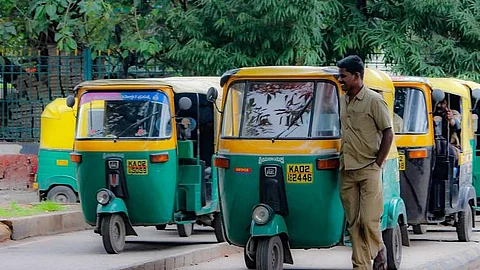

Trade unions, farmer groups and pro-Kannada organisations have called for a bandh in Bengaluru on Tuesday, September 26, demanding that the Karnataka government should not release Cauvery water to Tamil Nadu. As part of the bandh, these protesting groups have even asked schools and colleges to remain closed on Tuesday. Further, shops, factories, companies and transportation are also expected to extend their support to the bandh.
The official call for the bandh was given on Saturday, which stated that it will be in effect from 6 am to 6 pm on September 26. With the All India Trade Union Congress (AITUC)-backed staff participating in the bandh, Karnataka State Road Transport Corporation (Karnataka SRTC) and Bangalore Metropolitan Transport Corporation (BMTC) services are expected to be affected. Further, Ola Uber Driver's and Owner's Association are also participating in the bandh, according to reports. So, here is why the bandh is happening:
The ongoing dispute over the Cauvery river water sharing between Karnataka and Tamil Nadu has been a recurring issue for decades. The current call for bandh stems from a direction by the Cauvery Water Disputes Tribunal (CWDT) last week, that asked the Karnataka government to continue releasing 5,000 cusecs of water to Tamil Nadu for another 15 days.
However, the Karnataka government maintains that there is no water available for releasing into Tamil Nadu. Earlier last month, the Karnataka government had even advised farmers in the Cauvery basin to halt their sowing activities stating that there might not be adequate water storage needed for irrigation. As of August 16, the state reported a rainfall deficit of 14%.
Meanwhile, the Tamil Nadu government approached the Supreme Court asking the Karnataka government to release 7,200 cusecs of water per day from Karnataka's reservoirs. Senior advocate Mukul Rohtagi, appearing for Tamil Nadu, contended that CWMA “mechanically” reduced the quantity to 5,000 cusecs per day against an amount of 7,200 cusecs per day recommended by the CWRC taking the situation into consideration. On the other hand, senior advocate Shyam Divan, appearing for Karnataka, argued that the CWMA should have not ordered for release of more than 3,000 cusecs per day from the dams of Karnataka. Divan said that the state is facing shortage of drinking water as well. He said, “This drinking water aspect is extremely crucial. As far as Tamil Nadu is concerned, it is essentially for irrigation but for Karnataka, it is drinking water as well as irrigation.”
However, the Supreme Court refused to interfere with the directions passed by the Cauvery Water Management Authority. A Bench comprising Justices BR Gavai, PS Narasimha and Prashant Kumar Mishra noted that both, the Cauvery Water Regulation Committee (CWRC) and Cauvery Water Management Authority (CWMA) consist of experts from the field of water resource management and agriculture and had considered all relevant factors, including over 48% less rainfall to arrive at the conclusion.
Read: Why the Cauvery dispute between Karnataka and Tamil Nadu is surfacing again